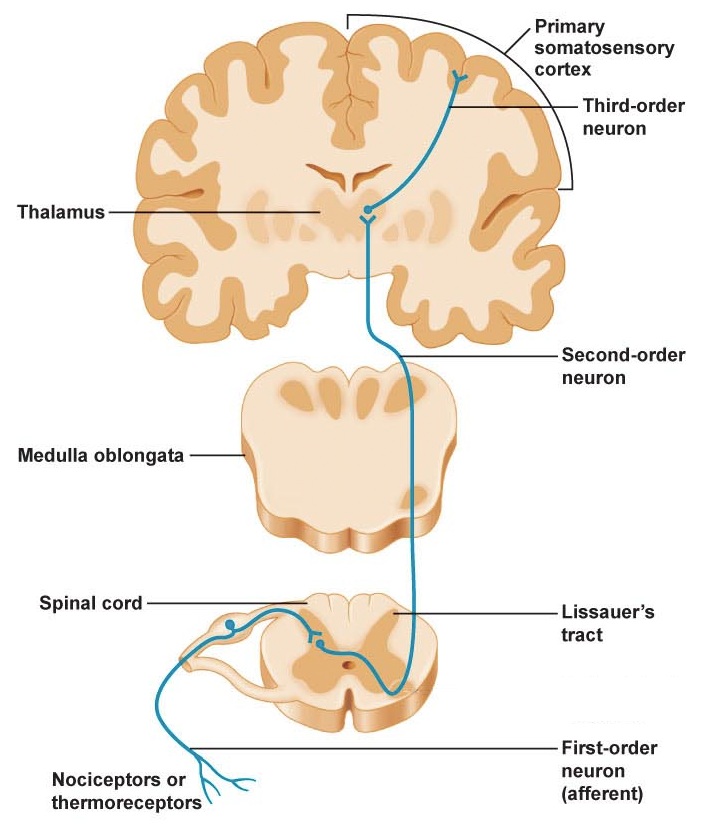Answer: The dorsal-column medial-lemniscus is an ascending somatosensory pathway that carries fine touch and proprioception information from the surface of the skin to the brain.
Our skin has several different types of receptors that play a unique role in detecting sensations at our skin (free nerve endings, Pascinian corpuscles, Ruffini endings, Merkel’s disks, among others). These receptors are activated under different conditions. Touch information at the skin surface is converted into electrical and chemical signals. These signals must pass to the central nervous system before one becomes aware of the environment.
For sensory modalities such as touch, vibration, and proprioception, the electric signals are carried by axons extending from the periphery. They combine inside the spinal cord and ascend anteriorly towards the brain. This bundle of axons is called the dorsal-column medial-lemniscus tract. Because the axons that compose the tract are heavily myelinated, conduction is rapid.
The sensory neurons from the skin are called the first order neurons. They send their axons to the second order neurons, which synapse at the nucleus cuneatus or nucleus gracilis in the medulla. The third order neurons are in the thalamus.
Sensory information rises through the ipsilateral spinal cord. This means that the sensory information from the left leg, trunk, and arm ascend on the left half of the spinal cord.
The sensory information decussates, or crosses over, at the level of the medulla. This is also the second neuron of the pathway. Sensory decussation means that the touch information from the left hemisphere is received by the right half of the brain, and vice versa.










